
Introduced in early 1959, the Nikon F is a versatile SLR. Besides the F-mount with its large selection of lenses, the F's viewfinder and focussing screen are interchangeable. In addition, the F can be equipped with a motor drive.
An additional, simpler F-mount body made sense! The first model of this kind was the Nikkorex F (Nikon decided to use the name "Nikon" only for the professional models). The Nikkorex F was offered from 1962 to 1965. It was produced by Mamiya. The camera had a vertical metal focal plane shutter with speeds of 1 - 1/1000 second and a shortest X-sync speed of 1/125 second. As with the Nikon F, Nikon offered an attachable, coupled selenium exposure meter with the Nikkorex F.
In 1964, Asahi Pentax launched the "Spotmatic" SLR. It was one of the first SLRs to offer metering through the lens (TTL). However, the lens had to be stopped down for metering.
In 1965, Nikon introduced its implementation of TTL metering: The Photomic T viewfinder (for the Nikon F) and the Nikkormat FT. Both allowed TTL metering at open aperture! The FT - together with the simpler FS - was the start of the Nikkormat F series. The Nikkormat F series was a success and replaced the less successful Nikkorex F. It was built by Nikon itself. Don't get confused: "Nikomat" and "Nikkormat" are names of the same camera. Nikon used the name Nikomat in Japan and Nikkormat in the rest of the world.
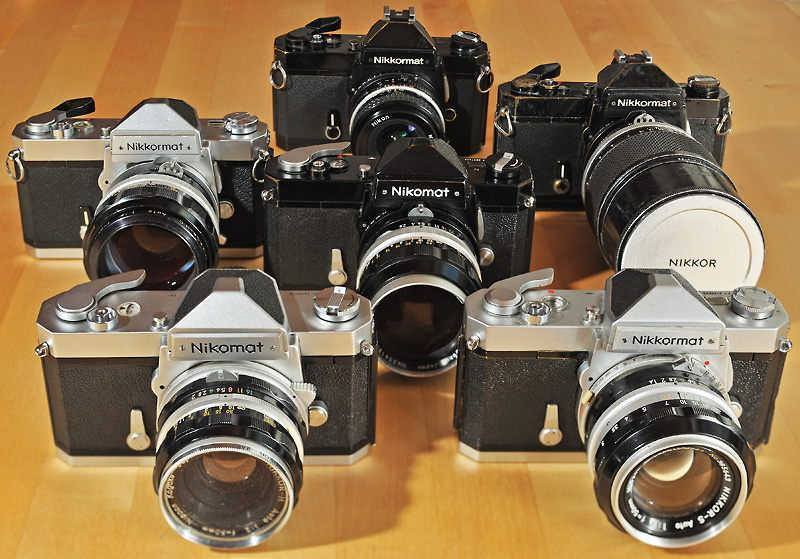
|
|
The Nikkormat/Nikomat F series. |
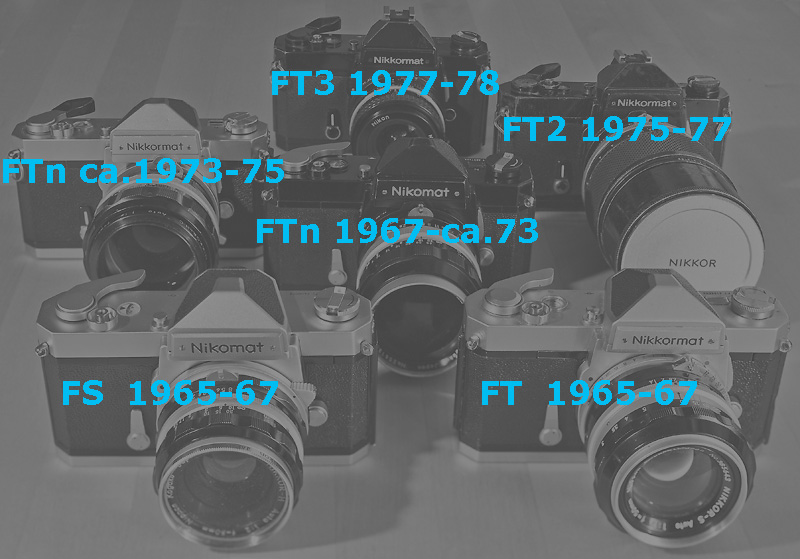
|
| Pleae note: there are two FTn samples in the photo because the FTn underwent a facelift around 1973. |
In 1978, the name Nikkormat disappeared from Nikon's sales brochures. In its 13 years of production, the Nikkormat F series became a legend. Cheaper and simpler than an F or an F2, they were just as robust and reliable! Professional travel and landscape photographers often still used Nikkormat F bodies in the 1980s. The basic concept of the Nikkormat F series remained unchanged over the 13 years, but there was a successful optimisation over the years.
Let's dive into the evolution of the Nikkormat F series!
In 1965, in addition to the Nikkormat FT with TTL exposure metering, Nikon also launched a simpler version called FS without an exposure meter.
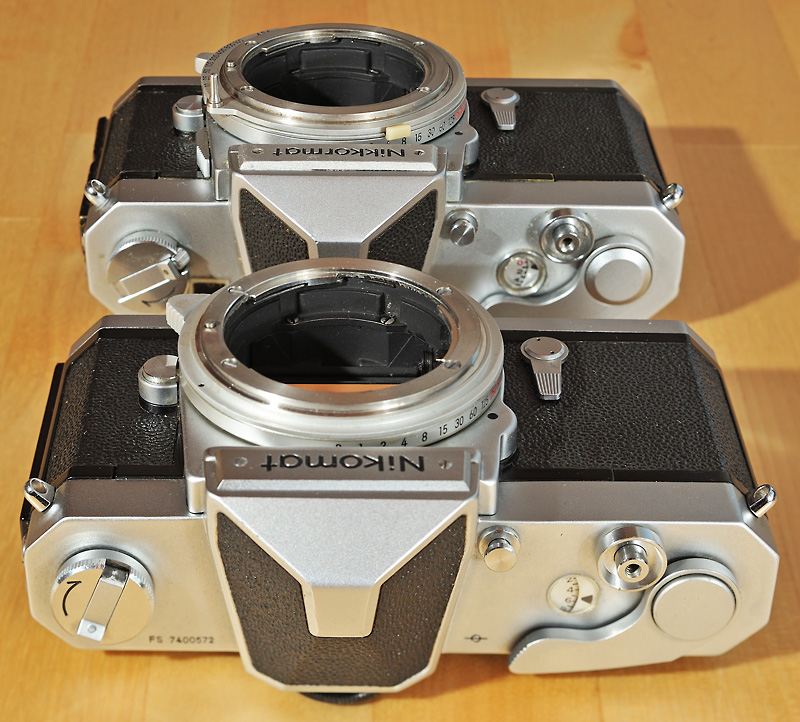
|
|
In the front the Nikomat FS - behind it the Nikkormat FT. Perhaps the most exotic detail of the Nikkormat F series is the shutter speed dial located around the F mount. The FS has a large lever for setting the shutter speed. On the FT, the lever is smaller because the exposure meter setting elements are close by. Please note: the FT has a silver ring around the frame counter, the FS does not have this ring. This is not a difference between the cameras - the reason is: the sample of the FS shown here is a very early one. Also early FTs did not have this ring. |
The basic specifications of these two cameras and also of the succeeding Nikkormat F models are:
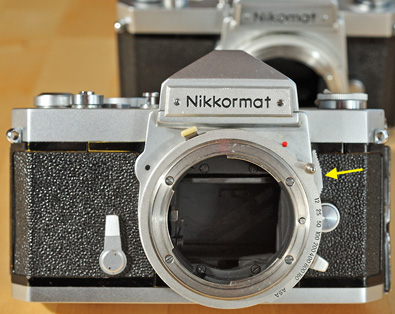
|
|
The lever for locking the mirror. |
The Nikkormat FT also has these features:
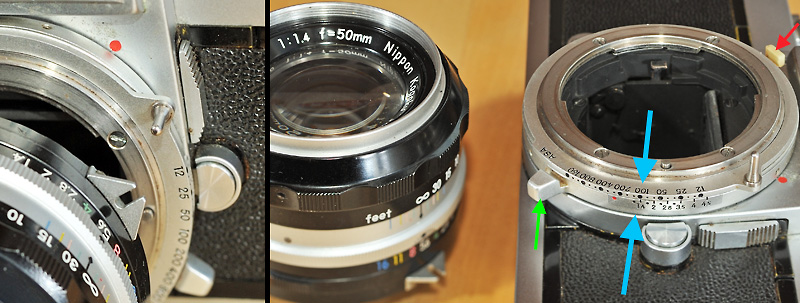
|
|
For mounting the lens move the coupling pin on the camera side to the right as far as possible. Then set the lens to F5.6 and mount it as you know it from a modern F-Mount gear. Additionally you must index the exposure meter to the lens speed and the sensitivity of the loaded film. In our example, the speed of the lens is f/1.4 and the film has a sensitivity of ISO 100. Both values must match - see blue arrows. You can move the lens-speed scale as follows: hold the shutter speed lever (green arrow) in position, then press the little plastic lever (red arrow) towards the mount and rotate it. Indexing can be done before or after mounting the lens. |
The FT has no viewfinder indicators other than the light meter needle and the FS has none at all. Both cameras are equipped with a type J focusing screen. To operate the light meter, the FT has a battery compartment on the bottom. You need a 1.3V Mercury battery (PX625), which is no longer common today. Tip: search the internet for "WEINCELL".
In 1967, just two years after the introduction of the Nikkormat range, a successor to the Nikkormat FT was launched: the Nikkormat FTn. At the same time, the FS was discontinued, the sales figures of this model were too low.
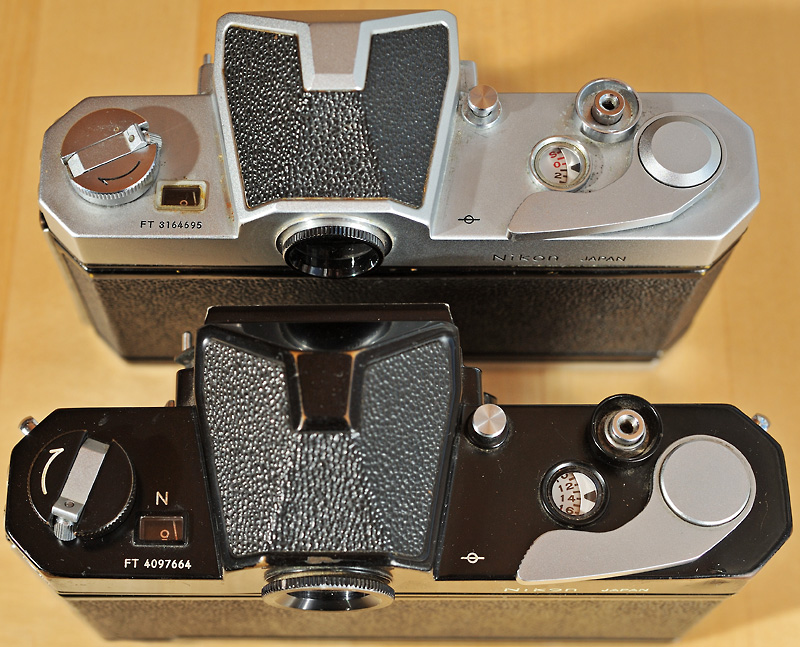
|
|
The most reliable identification feature of the FTn is the letter "N" above the small light meter window. From this perspective, you get the impression that there is hardly any difference between the FT and the FTn. But that's wrong! But even in this image, if you look closely, you can see an improvement: the shutter release has got a second cable release thread - while the professional cameras of the F and F2 series only support Leica-style cable releases and the Nikkormat FS and FT only support standard cable releases, the Nikkormat FTn supports both types! |
The most important improvements of the FTn can be found in the viewfinder and in the exposure metering:

|
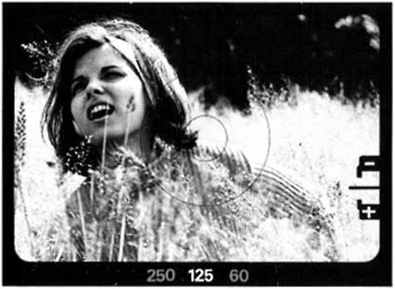
|
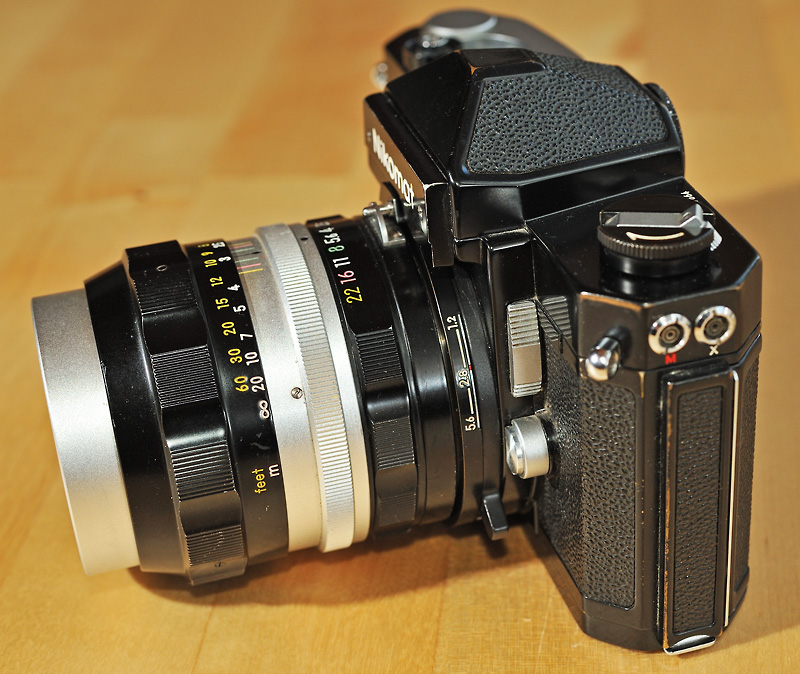
|
|
Mounting a lens begins in the same way we now it from the FT: move the coupling pin on the camera side to the right as far as possible. Then set the lens to F5.6 and mount it as you know it from a modern F-Mount gear. Just after mounting rotate the aperture ring to the greatest value (here it is 22) and then rotate it to the smalest value (here it is 2.5). Now the lens speed is "programmed" into the camera! Check the the scale on the side of the mount - the red dot shows the lens speed (here it is 2.5). That's semi-automatic indexing! |
In 1973, the Nikkormat FTn underwent a cosmetic makeover so as not to look outdated compared to the Nikon F2 and the Nikkormat EL. The self-timer and the film advance lever got a plastic coating and the leatherette got a new texture. Compare for yourself:
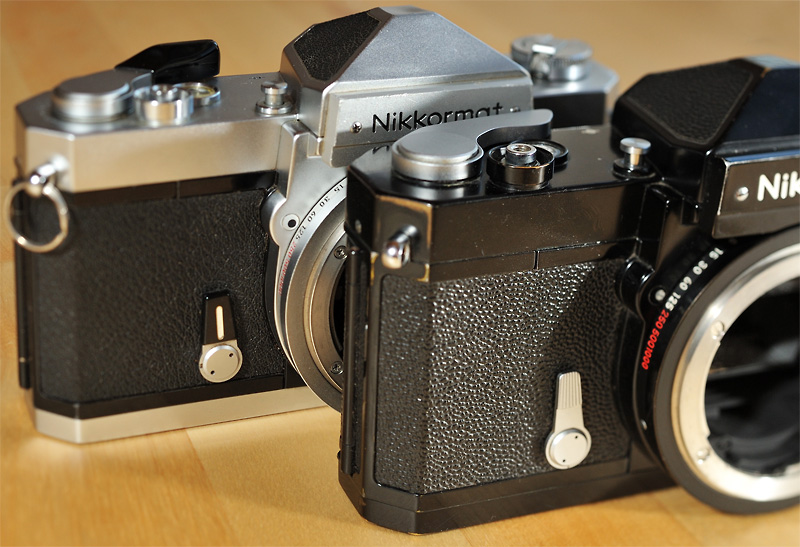
|
|
In terms of ergonomics the plastic-coated film advance lever is a significant improvement! |
But there is one thing that must be criticised about the FTn: the ISO setting. It is a real danger for your fingernails, because it is very stiff so as not to be adjusted accidentally. Use a biro, key or similar to help! That's where the scratches on the ISO scale of my sample come from...
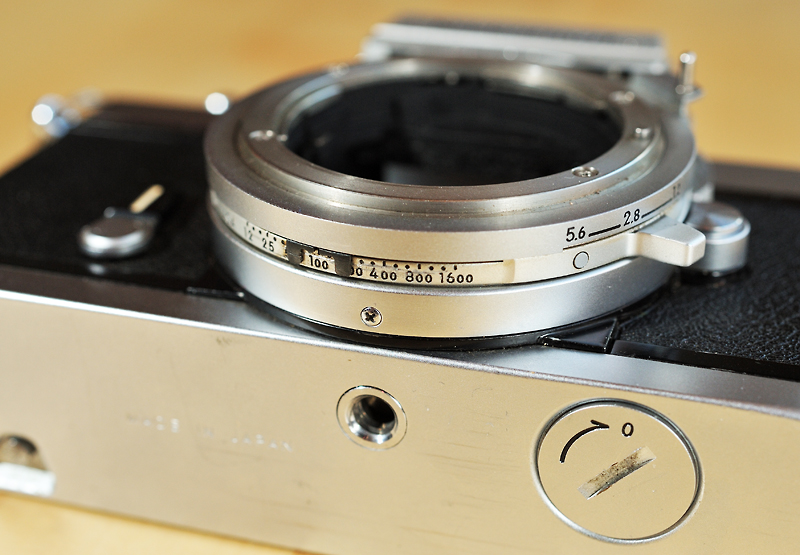
|
In 1975 Nikon introduced the Nikkormat FT2. Again, the new model shows a couple of improvements. We start where we left off at the FTn:
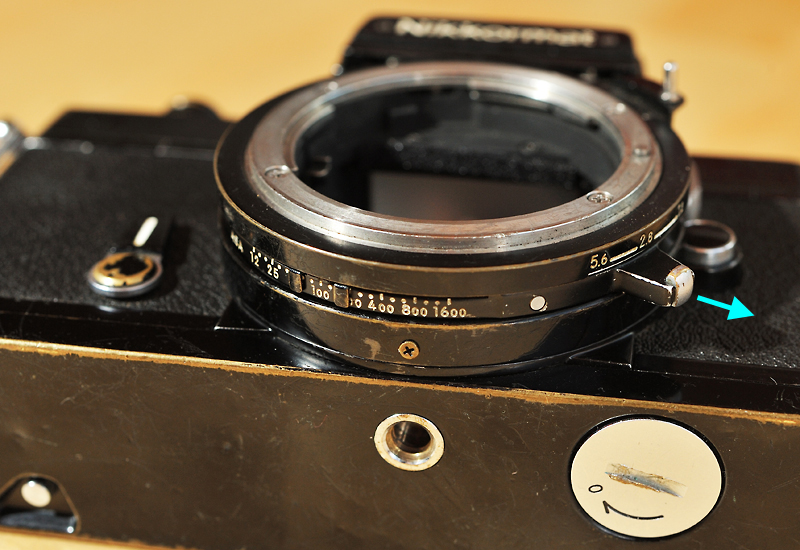
|
|
Integrated in the shutter speed lever there is now a small silver knob. If you pull this knob, the ISO value can be set directly on the scale without any problems and without danger for your fingernails! Otherwise, the ISO setting is locked. Well done, Nikon! |
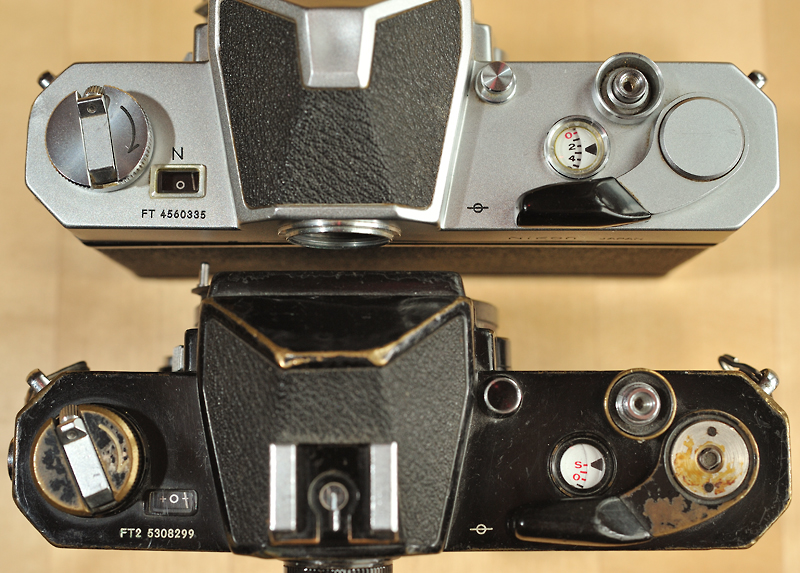
|
|
The view from above shows two new features: the small window for exposure metering has got +/- markings and on the viewfinder the FT2 has a fixed hot-shoe for mounting a flash. |
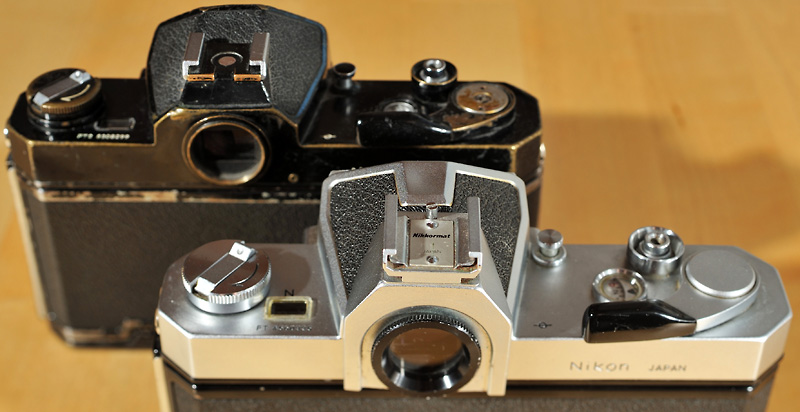
|
|
For the sake of completeness, here is an additional image showing the accessory shoe offered by Nikon for the older FS, FT and FTn models. Do not confuse a Nikkormat with this accessory shoe with the FT2! |

|
|
The older models FS, FT and FTn had two flash terminals, one for bulb-flashes ("M") and one for electronic flashes ("X"). The FT2 has only one terminal for both types of flashes (the hot shoe can also be used with both types of flashes). Moreover the flash terminal of the FT2 hat a thread for mounting professional sync-cables (still a Nikon standard today!). |
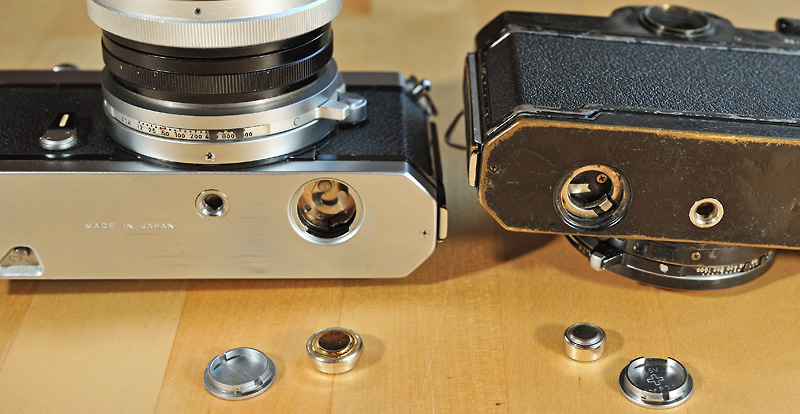
|
|
While the old Nikkormat F models require the PX625 battery, the FT2 is powered by the 1.5V LR44 battery that is still widely used today. |
There is also a new feature in the viewfinder: the FT2 comes with a type K focusing screen, a mixture of the types A and J. This became the Nikon standard for all succeeding manual focus SLRs.
The FT3 and the FT2 differ only in one feature: the aperture coupling between camera and lens. While the FT2 uses semi-automatic indexing, the FT3 uses Nikon's new AI system (AI stands for automatic indexing):
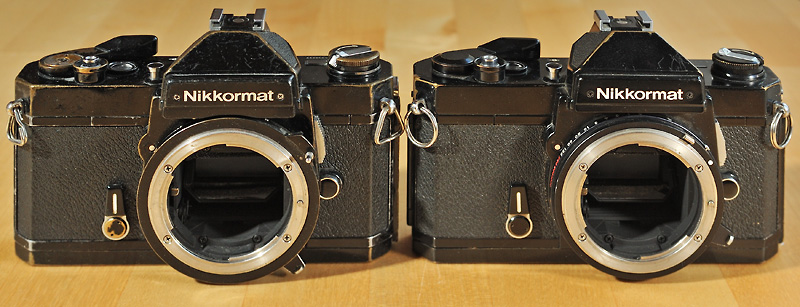
|
|
On the left the FT2, on the right the FT3. |
The Nikkormat FT3 is the last Nikkormat and the only Nikkormat with AI coupling.
The changeover to AI coupling leads to restrictions in compatibility. Nikon offered a low-cost conversion service for many old lenses for a few years. The aperture ring was exchanged for an AI aperture ring. These so-called AI-modified lenses essentially behaved like original AI lenses. Both, AI lenses and AI-modified lenses had a coupling prong in addition to the AI coupling. The cheap Nikon series E lenses from 1979 and the AF-Nikkor lenses introduced in 1986 do not have a prong.
The following chart shows the lens compatibility of the Nikkormat FT-models:

|
You can use each lens type on each camera - that's fine! Two combinations require a stop-down metering - the exposure metering must be done with the lens stopped down to the preset aperture value.
Here are the two combinations:
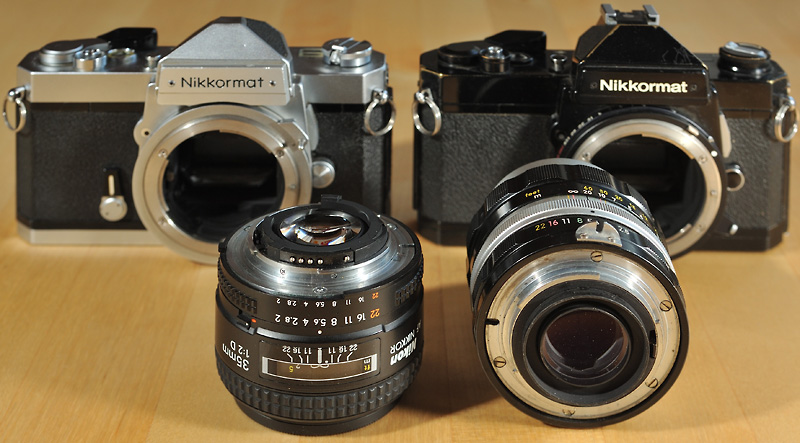
|
|
Nikkormat FT, FTn or FT2 plus AF-Nikkor 35mm f/2 D (an AI lens without a prong) and Nikkormat FT3 with an old, non-modified 105mm f/2.5. |
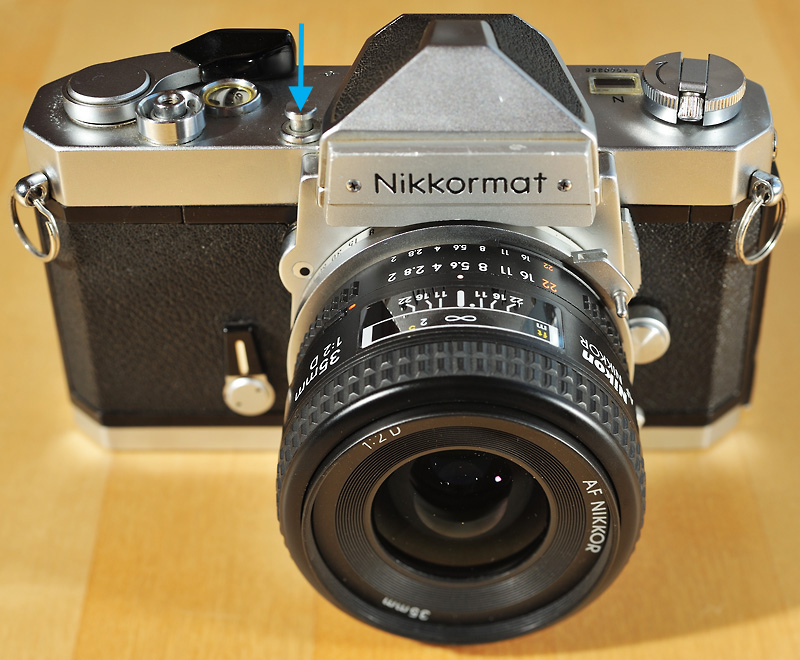
|
|
FTn or FT2 plus AF-Nikkor 35mm: move the coupling pin as fas as possible to the right. Mount the lens. Press the depth-of-field preview button (blue arrow) while metering. |
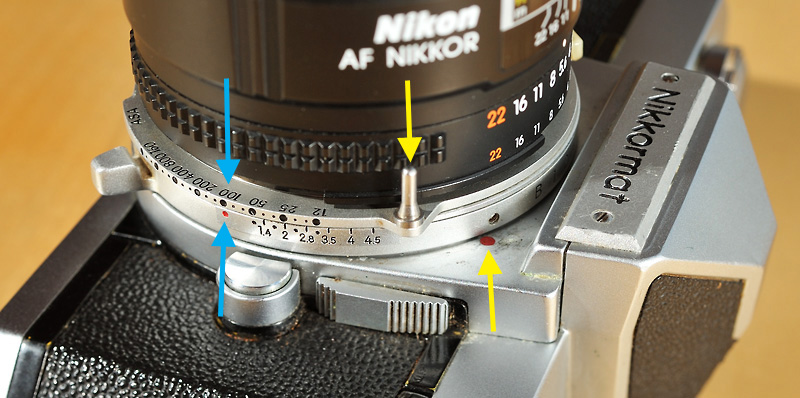
|
|
FT plus AF-Nikkor 35mm: with the FT there is a bit more to do. Move the lens speed scale to bring the small red dot and the ISO value of the loaded film to a match. In my example the ISO value is 100 and I moved the small red dot to match the "100", see blue arrows. Then move the coupling pin to match the big red dot (yellow arrows). Here, too, you have to keep the stop-down button pressed during the exposure metering. |
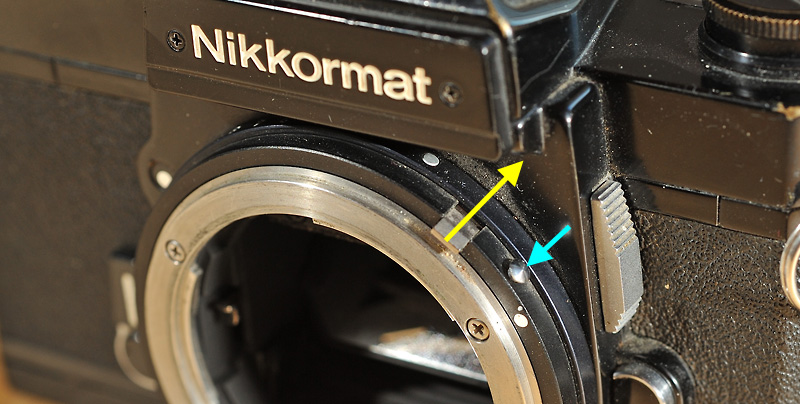
|
|
FT3 plus old Nikkor 105mm: press and hold down the small button (blue arrow). Then fold up the AI coupling (yellow arrow). Now, mount the lens... |
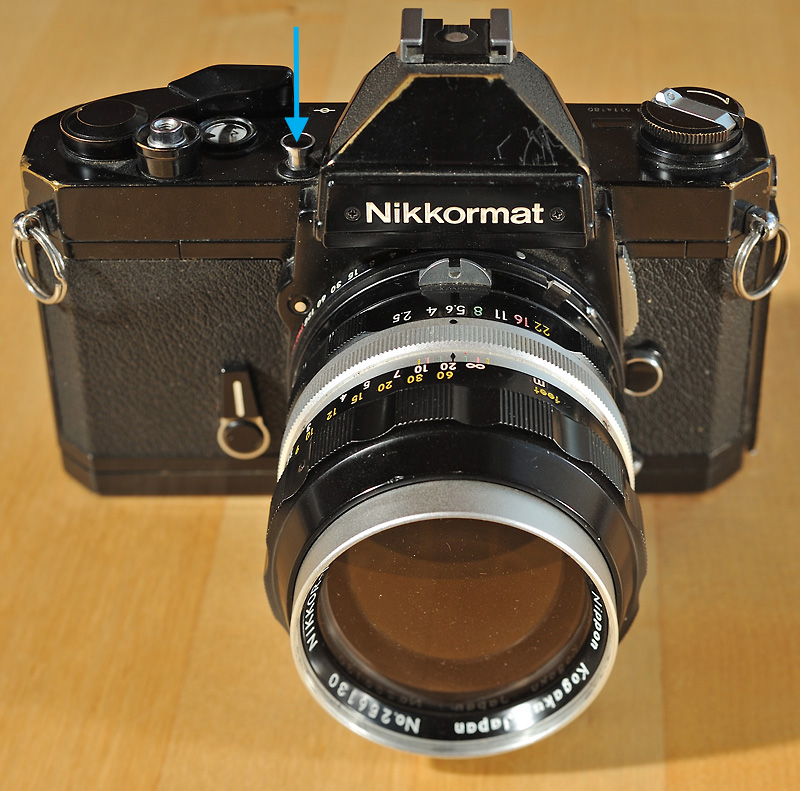
|
|
...and don't forget to press the depth-of-field preview button (blue arrow) while metering. |